Want Dazzling Azaleas and Rhododendrons Next Spring? Do These 3 Fall Tasks – and Skip This Common Mistake
These essential tasks for fall will ensure your azalea and rhododendron shrubs will be lush and vibrant next spring.
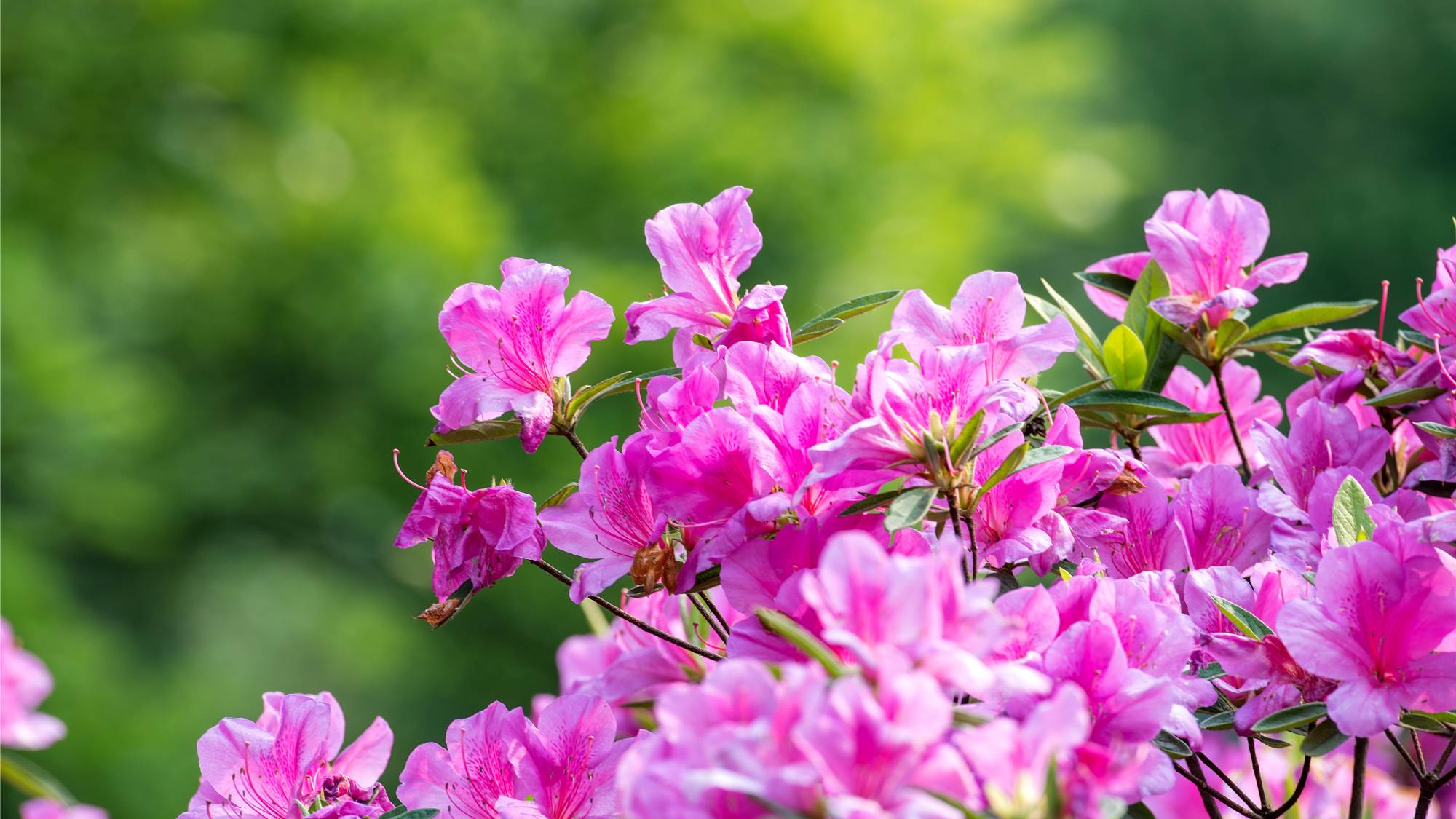

Amy Draiss
Azaleas and rhododendrons are beautiful shrubs that brighten your landscape with vibrant flowers in the spring. Azaleas are a deciduous species in the Rhododendron genus, so both types of shrubs have similar needs as we head into the cold months. It is important to give your azaleas and rhododendrons a little extra care in the autumn so they will thrive next spring.
Typically, growing azaleas and rhododendrons is a relatively low-stress endeavor, but you do need to prepare azalea shrubs for winter. There are a few simple fall care tasks that will ensure healthy plants and beautiful blooms next year.
Let’s explore the essential autumn tasks for azaleas and rhododendrons, and one task that should wait until spring.
Task #1: Give Them a Light Pruning
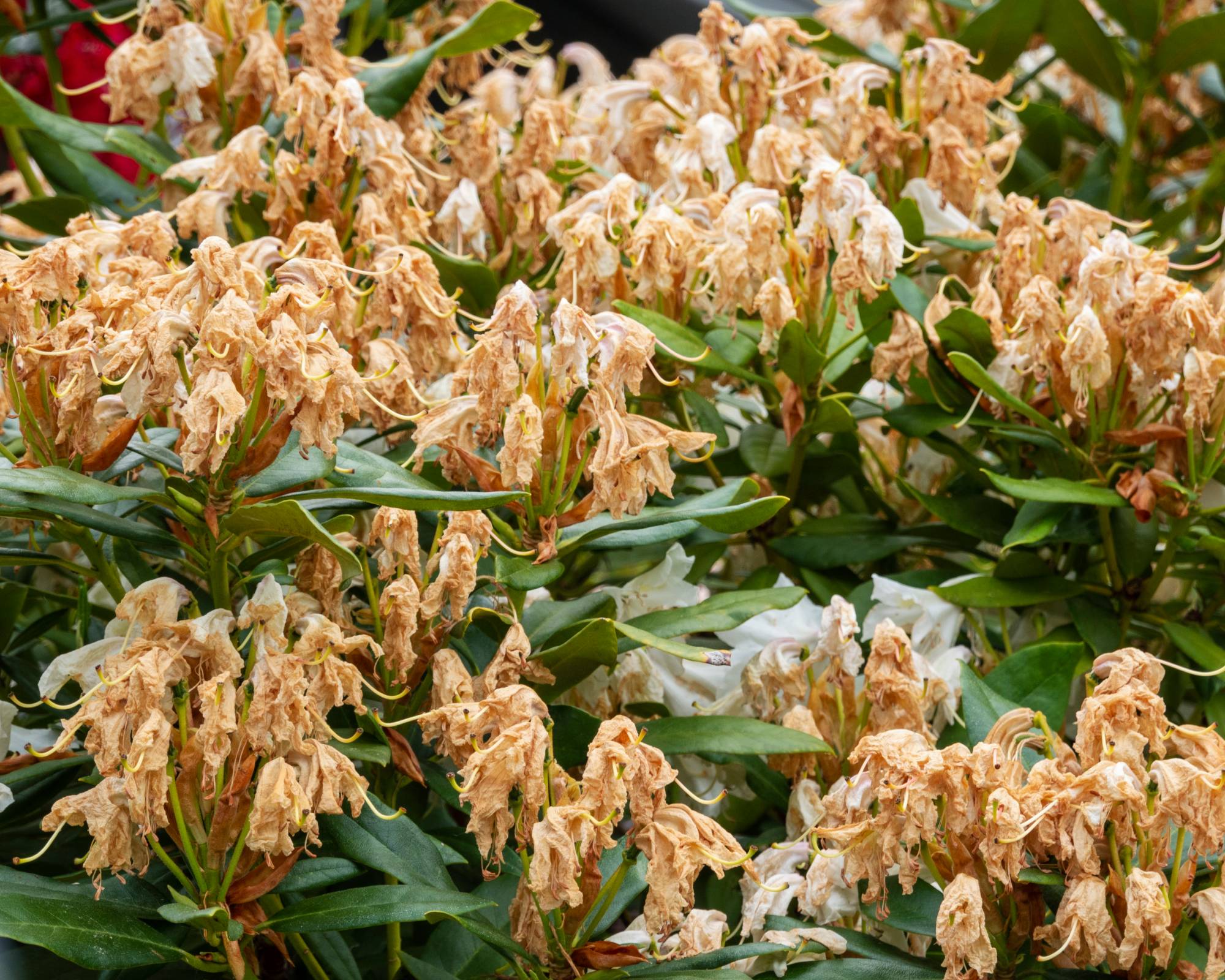
Both rhododendrons and azaleas will benefit from a light pruning before winter sets in. Pruning azaleas will give them more energy to produce healthy foliage and blooms next year. Go through your shrubs and remove any dead or dying branches with loppers. These Fiskars loppers from Amazon will cut branches up to 1.5 in. (3.81 cm) with ease. Don’t aim to do rejuvenation pruning in the fall. Just removing dead or diseased branches is enough at this time of year.
Fall is also a good time to deadhead any spent blooms that are still on your rhododendrons or azaleas. Snip off any brown or faded flowers down to the stem. Our Editor in Chief swears by the Felco F2 pruning shears, which are available on Amazon, for all her pruning and deadheading. Using clean, sharp tools is important to halt the spread of disease and prevent damage to the plant. You should sterilize your pruning tools before you get snipping.
Task #2: Apply a Thick Layer of Mulch
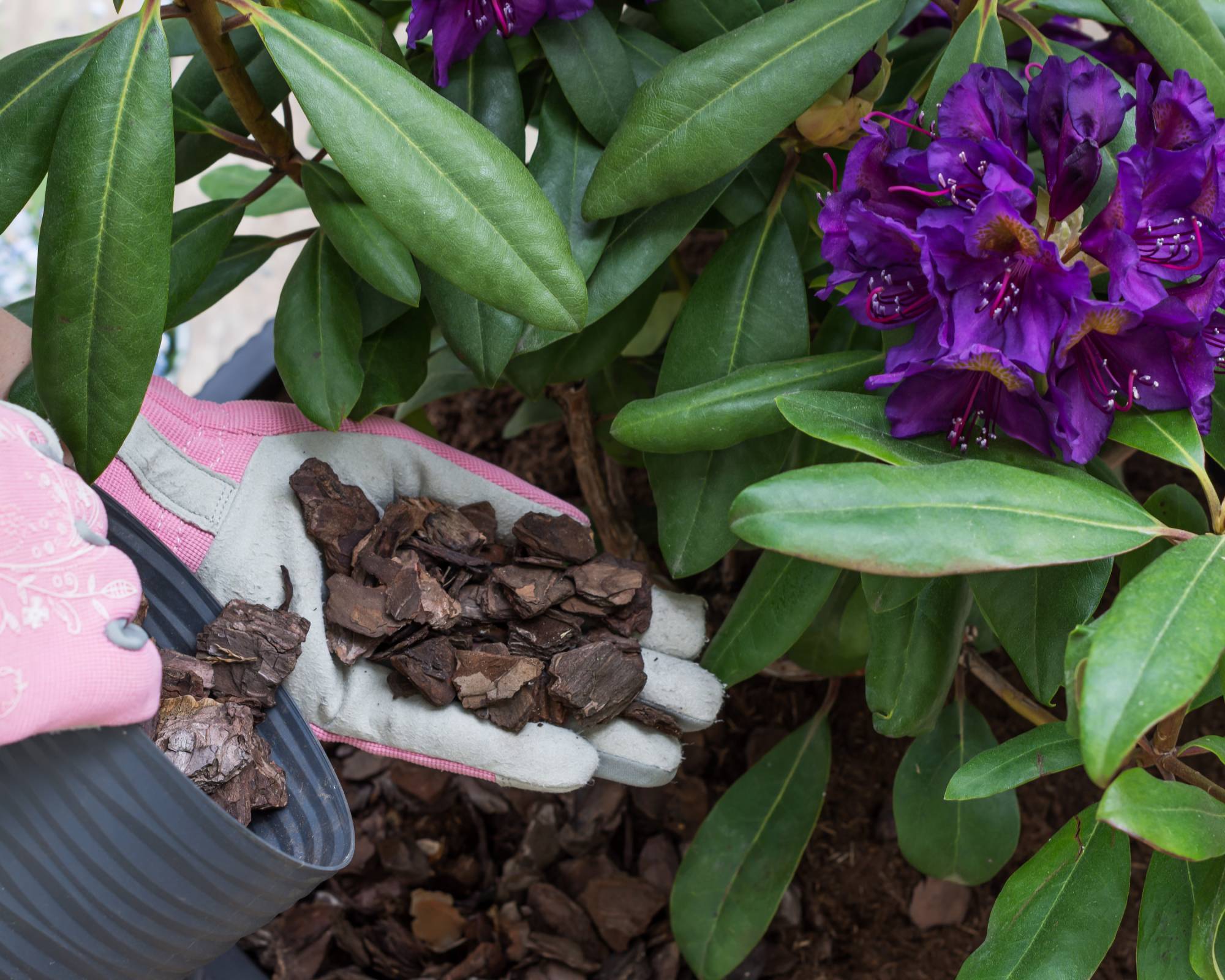
There are cold hardy varieties of azaleas and rhododendrons, but all of them will still benefit from a thick, protective layer of mulch before frost arrives. This is especially important in colder USDA hardiness zones. Good rhododendron winter care consists of applying 2-4 inches (5.1-10.2 cm) of organic mulch around the base of the shrubs. Ensure the mulch doesn’t touch the trunk. This will protect the delicate, shallow roots from freezing, but also prevent any rotting of the trunk. Mulching your shrubs in October, or at least before your first frost date, will give them the best chance of surviving the winter and it will also suppress weed growth into the spring.
Pine straw is the best mulch for azaleas and rhododendrons because they prefer a slightly acidic soil. You can find premium pine straw on Amazon or your local garden center. If you have azaleas in pots that will stay outdoors over the winter, you can dig a hole in your yard to place it in and mulch over top. If you don’t want to dig a hole, you can insulate the pot by surrounding it with hay bales or layers of burlap. A reusable frost blanket, like this one from Amazon, will help to protect the aboveground portion of the shrub from frost.
Sign up for the Gardening Know How newsletter today and receive a free copy of our e-book "How to Grow Delicious Tomatoes".
Task #3: Water Deeply
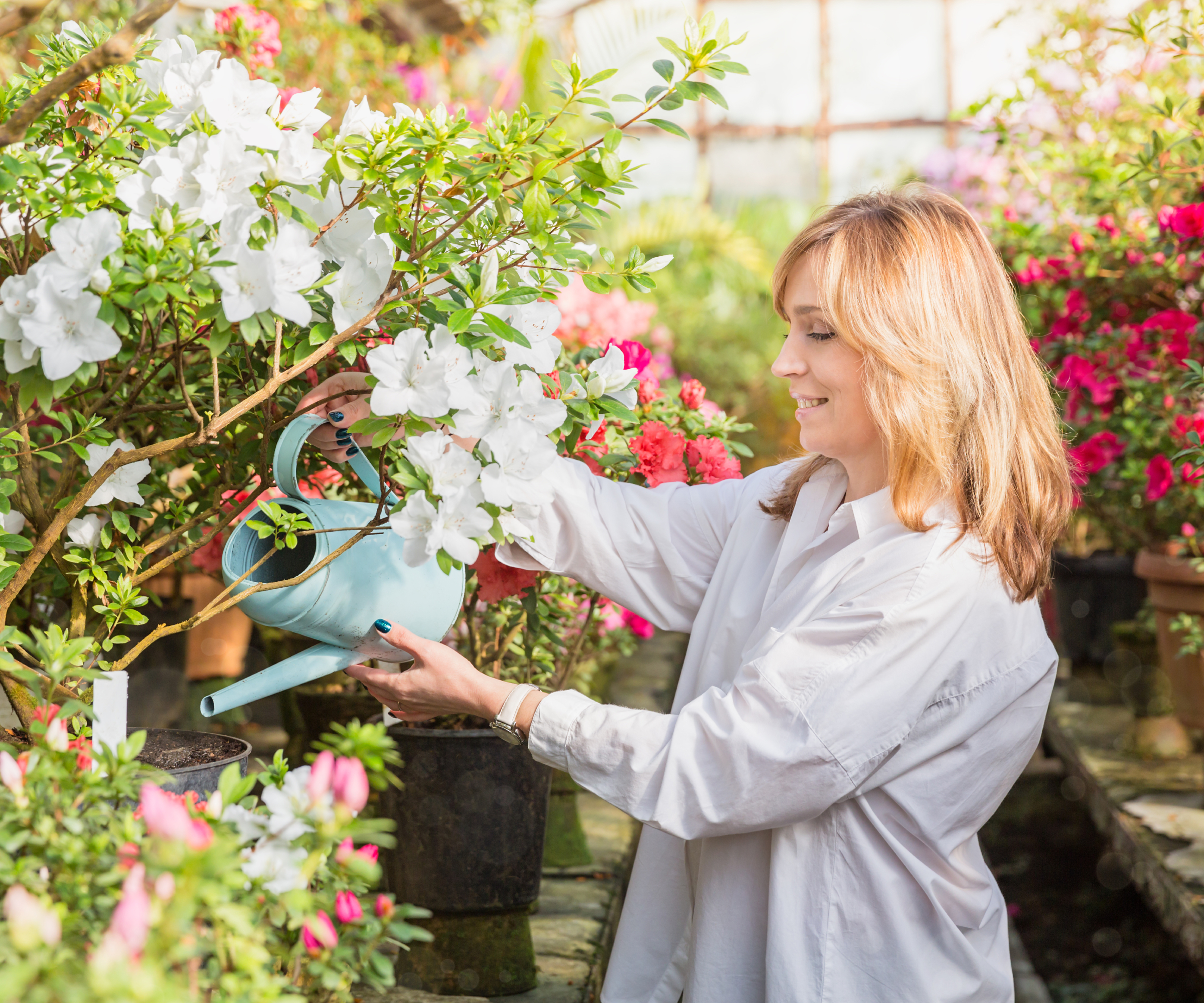
It is important to keep watering azaleas and rhododendrons through the fall to keep them happy and healthy for next year. Their natural habitat is shady woodland so they prefer moist soil. Water deeply and then keep an eye on the weather forecast to inform your future watering. If there is a hot or dry spell in the autumn, you will need to continue your watering. If it is particularly rainy fall, ease up on the watering.
It is also a good idea to water before the first freeze of winter. Moist soil holds up to four times the heat of dry soil, so this will keep your azaleas and rhododendrons warmer as winter weather begins to rear its head. This retractable hose reel from Vego can be purchased from Amazon and is a great system to water your landscape and containers, while also banishing tangled hoses.
Avoid Fertilizing Until Spring
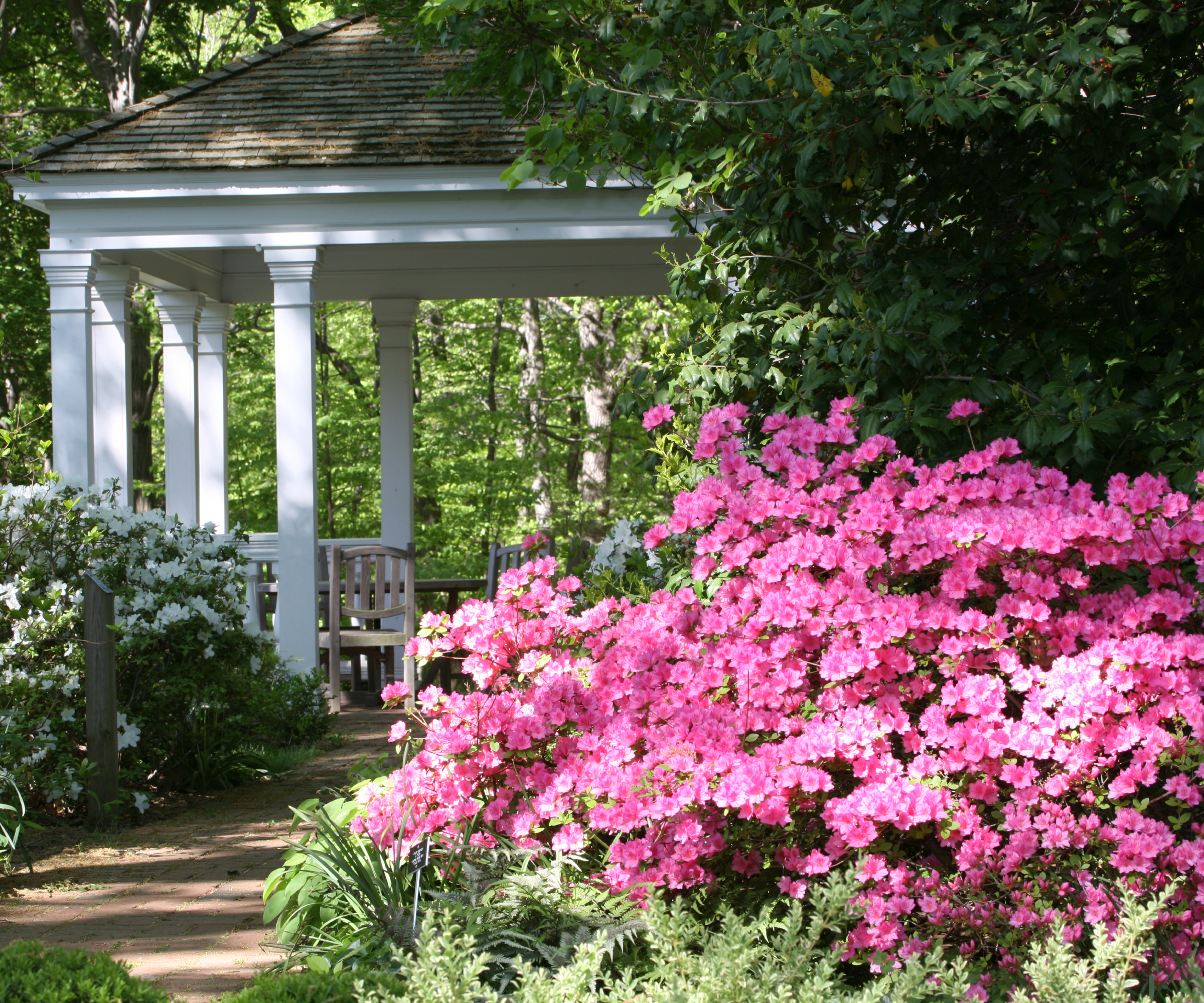
One thing you may be tempted to do in the fall is fertilize your azaleas and rhododendrons, but this could actually harm them. Fertilizing in the fall will tell the plant to start producing more leaves and blooms and the new growth will be killed off by the cold weather. The best time to fertilize azaleas is in the late winter or early spring. Come springtime, fertilize your azaleas safely with Miracle-Gro’s azalea and rhododendron plant food which can be found on Amazon.
Follow these simple tips to get your azaleas and rhododendrons ready for cold weather this winter and you will have dazzling spring blooms before you know it!

Kathleen Walters joined Gardening Know How as a Content Editor in 2024, but she grew up helping her mom in the garden. She holds a bachelor’s degree in History from Miami University and a master’s degree in Public History from Wright State University. Before this, Kathleen worked for almost a decade as a Park Ranger with the National Park Service in Dayton, Ohio. The Huffman Prairie is one of her favorite places to explore native plants and get inspired. She has been working to turn her front yard into a pollinator garden.
- Amy DraissDigital Community Manager